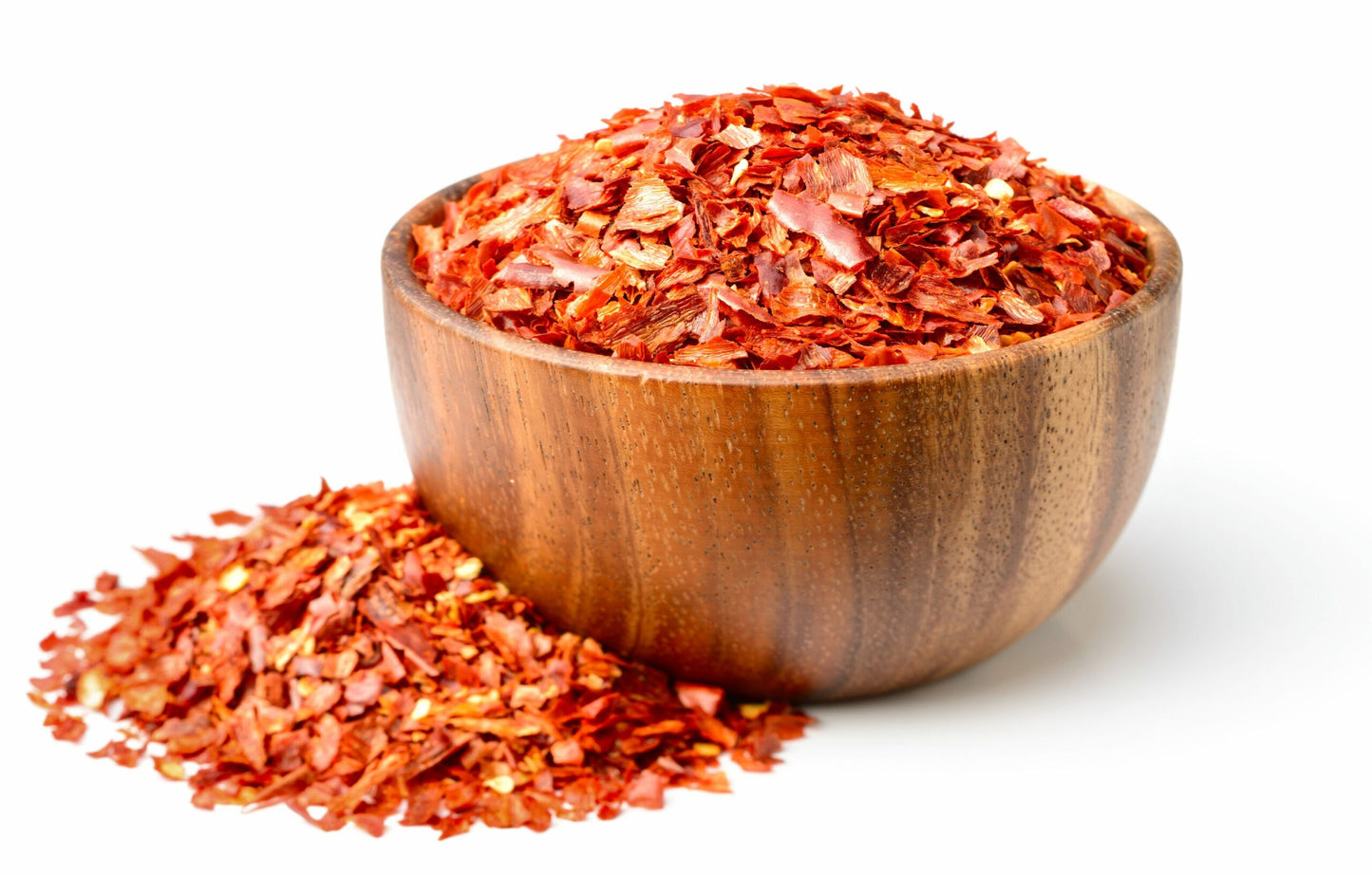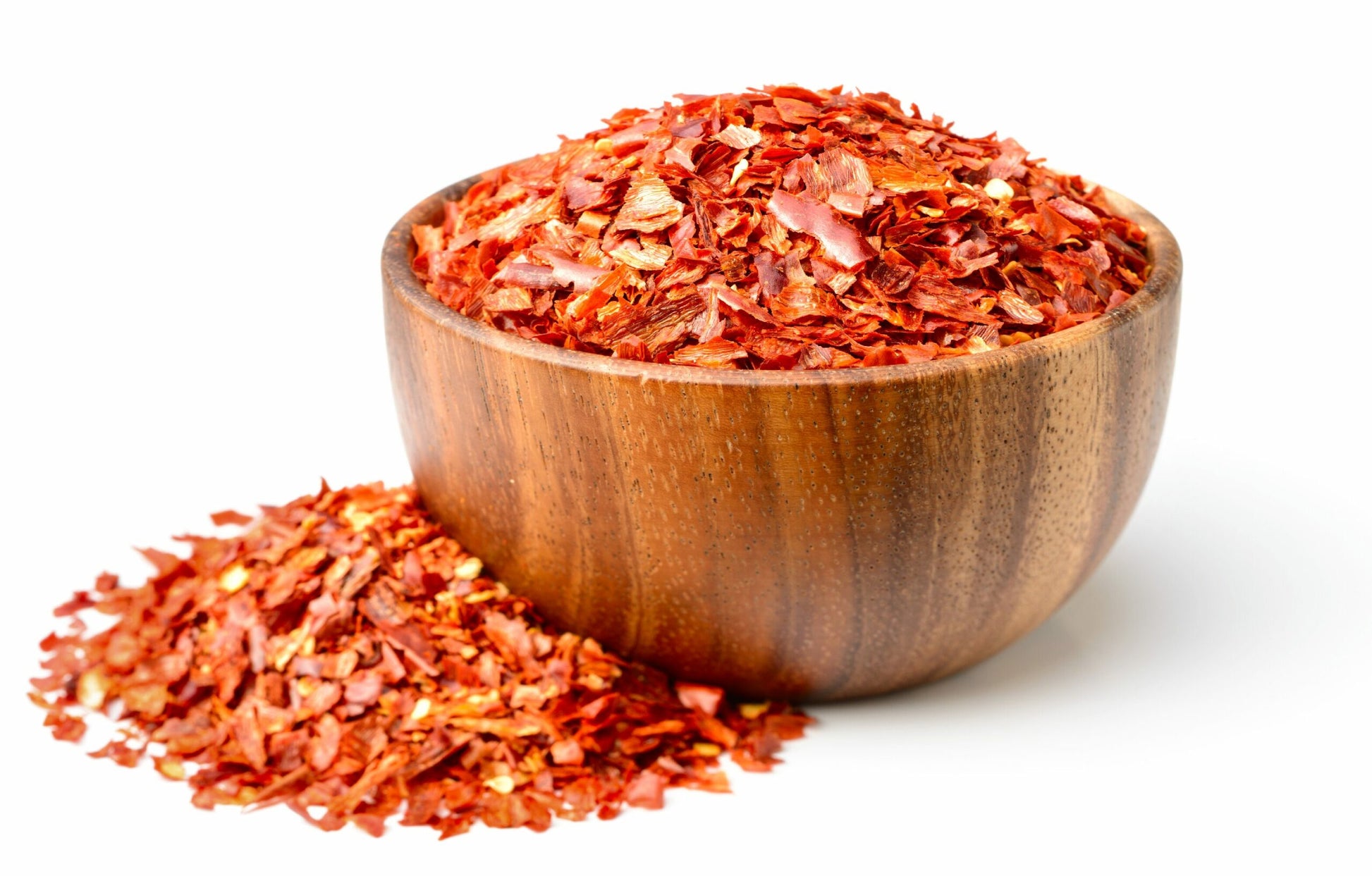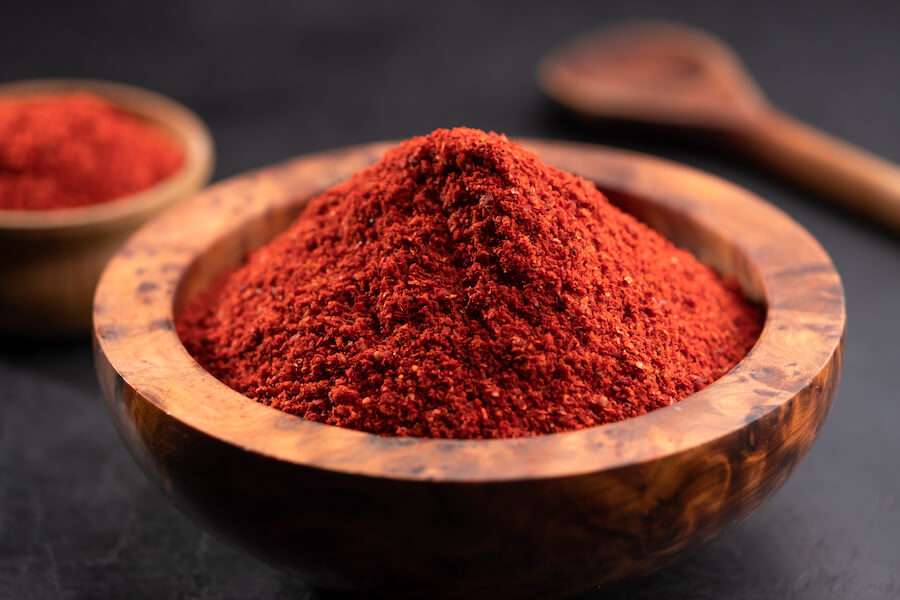Paprika
Paprika
Couldn't load pickup availability
Paprika is a vibrant and flavorful spice made from dried and ground red peppers, primarily the Capsicum annuum species. It is widely recognized for its distinctive reddish color and its unique sweet, smoky, or pungent taste, depending on the variety. Here are some key aspects:
Flavor Profiles: Paprika comes in various flavor profiles, ranging from sweet to hot. The sweet version, which is the most common, has a mild, slightly fruity flavor with minimal heat. The hot paprika, on the other hand, packs more of a punch and adds spiciness to dishes. Smoked paprika, or pimentón, has a deep, smoky flavor and is often used in Spanish and Mexican cuisines. This variety is achieved through smoking the peppers before grinding.
Culinary Uses: It is a versatile spice, enhancing the flavors and presentation of a wide range of dishes. It’s a staple in Hungarian cuisine, particularly in classics like goulash and paprikash. It’s also a key ingredient in Spanish dishes like paella and chorizo, as well as in many Mediterranean and Middle Eastern recipes. Additionally, it is used to garnish deviled eggs and potato dishes, adding a pop of color.
Colorful Garnish: The brilliant red color makes it an appealing garnish for a variety of dishes, adding visual appeal and a touch of flavor. Sprinkled over hummus, soups, and stews, it creates an enticing presentation.
Health Benefits: Paprika, like other red peppers, is rich in vitamin C and contains antioxidants, such as carotenoids. These compounds can help protect cells from damage caused by free radicals. It also provides a mild metabolism boost due to its capsaicin content, which, in moderate amounts, may help with weight management.
Varieties: There are different varieties based on the type of pepper used, the region of origin, and the processing method. Some of the most well-known varieties include Hungarian sweet paprika, Hungarian hot paprika, Spanish smoked paprika (pimentón), and Californian paprika.
Culinary Staples: It is a common spice used in various spice blends, such as curry powder and Cajun seasoning. It also adds depth to sauces, marinades, and rubs for meats and poultry.
Storage: To maintain the quality of paprika, it’s important to store it in an airtight container in a cool, dark place, away from direct sunlight.
In summary, paprika is a versatile spice that adds color, flavor, and aroma to a wide range of dishes. Its various flavor profiles make it a valuable ingredient in numerous culinary traditions worldwide, enhancing both the taste and presentation of foods. Whether used as a garnish or as a fundamental ingredient in a recipe, paprika continues to be a beloved and essential spice in kitchens around the globe.
Share




